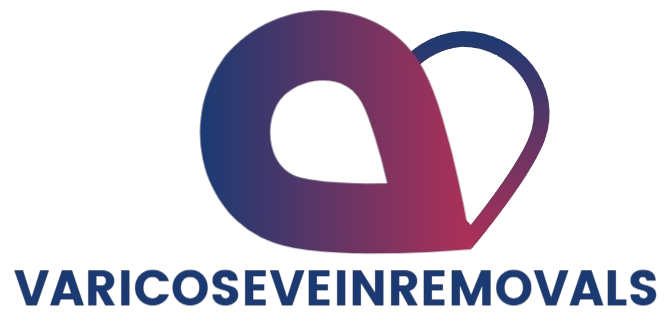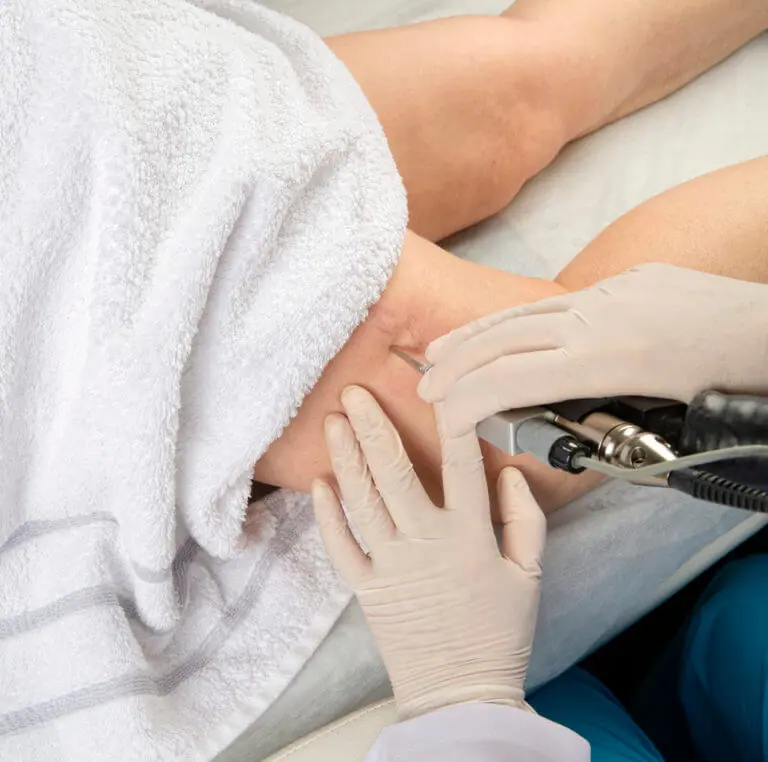If you’ve noticed twisted, swollen veins snaking across your legs, you’re not alone—millions of Americans are affected by varicose veins. While they may seem like nothing more than a cosmetic concern, these enlarged veins could be signaling a more serious underlying health issue. Unlike spider veins, which are smaller and often limited to aesthetic issues, varicose veins can point to a condition affecting both your vascular and heart health. While varicose veins themselves aren’t directly responsible for heart disease, they may be a warning sign of potential cardiovascular problems.
Understanding the Link Between Varicose Veins and Heart Disease
The connection between varicose veins and heart disease isn’t a straightforward one, meaning that varicose veins don’t directly cause heart disease, nor does heart disease directly cause varicose veins. However, research indicates that individuals with varicose veins are more likely to have other cardiovascular problems. In fact, studies have shown that people with varicose veins face a higher risk of developing congestive heart failure (CHF), a condition in which the heart struggles to pump blood effectively throughout the body.
The primary culprit behind varicose veins is malfunctioning vein valves. These valves are responsible for keeping blood flowing in one direction—back to the heart. When the valves weaken or fail, blood starts to pool in the veins, causing them to become swollen and twisted. This condition is known as venous insufficiency, and it affects circulation, particularly in the legs. This poor circulation not only causes the visible symptoms of varicose veins but can also be a contributing factor to more serious cardiovascular problems.
How Varicose Veins Impact Your Circulatory System
Varicose veins are more than just an inconvenience; they indicate that there may be issues with blood flow throughout your body. Proper blood circulation is essential for delivering oxygen and nutrients to organs and tissues. When blood doesn’t flow back to the heart as efficiently as it should, it can lead to various complications, especially for people already dealing with heart disease or other vascular issues.
For example, individuals who suffer from both varicose veins and heart disease often experience more severe symptoms. Swelling in the legs, skin discoloration, itching, and a burning sensation are common signs that the body isn’t circulating blood as efficiently as it should. Additionally, if left untreated, varicose veins can lead to more severe complications such as chronic leg ulcers, blood clots, and deep vein thrombosis (DVT). DVT is a life-threatening condition where a blood clot forms in the deep veins of the leg, potentially traveling to the lungs and causing a pulmonary embolism.
The Role of Lifestyle and Vascular Health
The presence of varicose veins may suggest that your vascular health is compromised, which, in turn, could make you more susceptible to heart disease. While the veins in the legs are often affected by gravity, lifestyle factors like poor diet, lack of exercise, and smoking can exacerbate the problem. These same factors are also known to contribute to the development of cardiovascular disease.
For instance, obesity and physical inactivity put extra pressure on the veins in the lower body, making varicose veins more likely to develop. A sedentary lifestyle not only hampers circulation but also contributes to high blood pressure, high cholesterol, and other risk factors for heart disease. In many cases, improving your overall lifestyle can help alleviate some of the symptoms of varicose veins while also reducing your risk for cardiovascular disease.
Complications to Watch For
If you’re already dealing with varicose veins, it’s important to monitor for complications that may arise, especially if you have heart disease or are at risk for it. As mentioned, DVT is one of the most dangerous conditions linked to varicose veins. A clot that forms in the deep veins can travel to the lungs, causing a pulmonary embolism, which can be fatal if not treated immediately.
In addition to DVT, varicose veins can lead to chronic venous insufficiency, which can cause severe leg swelling, skin ulcers, and even infection around the veins. These issues are not just cosmetic—they can interfere with daily activities, reduce quality of life, and require more extensive medical treatment if left untreated.
Seeking Medical Attention: When to Act
If you have varicose veins and experience any of the following symptoms, it’s essential to consult with a healthcare provider:
- Swelling in the legs or ankles: Persistent swelling can indicate poor circulation and may require medical intervention.
- Skin discoloration: A change in skin color around your veins can be a sign of venous insufficiency or other vascular issues.
- Itching or burning sensations: These uncomfortable sensations can be a result of poor blood flow and may signal the need for treatment.
- Ulcers or sores: Open wounds, especially near the ankles or lower legs, are a serious concern and require immediate medical attention.
These symptoms, while sometimes dismissed as minor inconveniences, could be signs of something more serious and should not be ignored. Seeking treatment early can prevent complications and help manage symptoms effectively.
Treatment Options: From Lifestyle Changes to Minimally Invasive Procedures
If you have varicose veins or suspect that you might, it’s important to seek professional care. Fortunately, there are several treatment options available to help improve both your vein health and your overall cardiovascular health.
- Lifestyle Changes: The first line of defense in managing varicose veins involves making lifestyle changes that promote better circulation. Regular exercise, maintaining a healthy weight, and avoiding long periods of standing or sitting can help improve blood flow and reduce the severity of varicose veins. Wearing compression stockings can also help alleviate symptoms by improving circulation in the legs.
- Minimally Invasive Procedures: For individuals who need more immediate relief or have more severe cases, vein specialists offer minimally invasive treatments such as sclerotherapy, endovenous laser therapy, or radiofrequency ablation. These procedures are designed to close off problematic veins, allowing blood to reroute to healthier vessels.
- Surgical Options: In rare cases, surgery may be necessary to remove severely damaged veins and prevent complications. However, most people find relief through less invasive treatments.
Conclusion: A Call for Early Intervention
Varicose veins may seem like a minor concern at first, but they could be a signal of larger issues with your vascular and cardiovascular health. If you’re dealing with varicose veins, it’s important to pay attention to the warning signs your body is sending you. By addressing the condition early through lifestyle changes and medical treatment, you can improve your vein health and reduce your risk for more serious cardiovascular issues.
Consulting with a vein specialist can help you get to the root of your symptoms and find the best treatment plan for you. With modern advancements in vein care, you don’t have to suffer from varicose veins or worry about the potential risks associated with poor circulation. Taking action now could improve both your leg health and your overall quality of life.



